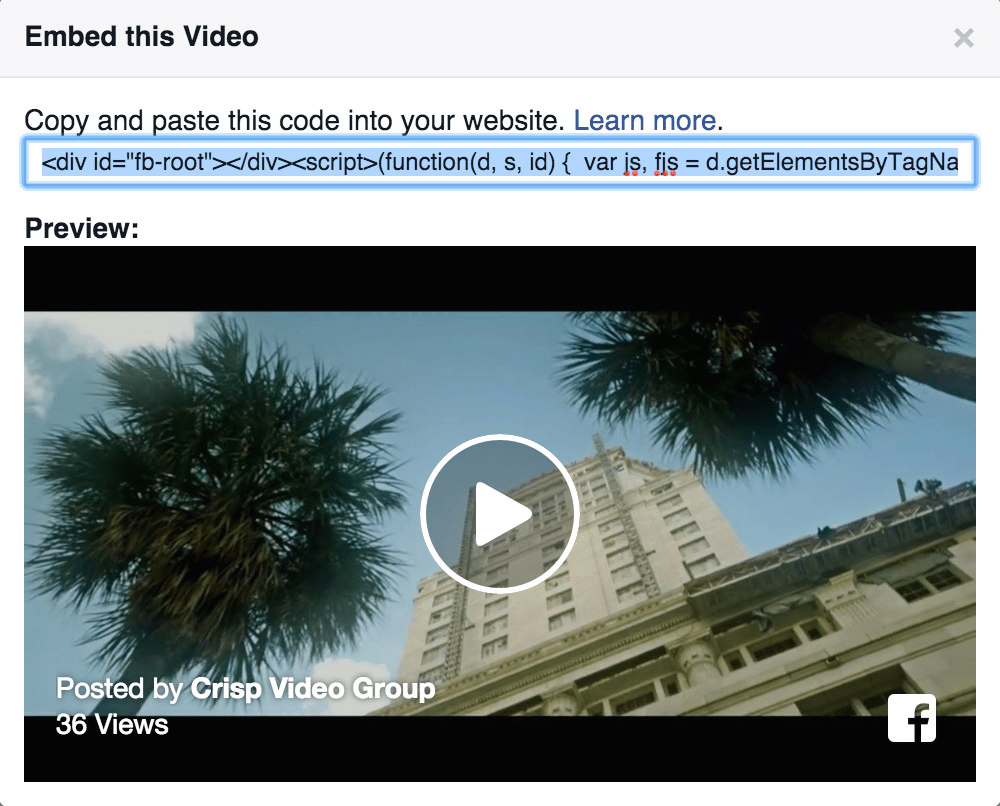Although YouTube is a behemoth of video sharing abilities, its social media competitor Facebook is becoming the most used tool in sharing videos online with other users, especially for brand and FAQ videos. This shift is video hosting popularity has proven that more and more companies are choosing Facebook over YouTube in terms of which website will debut their brand videos.
Because of Facebook’s status as a hub for interactivity for social media users, this has lead to an increase in popularity due in part to nurturing user engagement, especially through video. In particularly, Facebook enables companies to target specific groups of social media users, thus helping hone in advertising that is more effective.
In order to capitalize on Facebook’s growing popularity for video sharing abilities, you must learn how to properly upload and use videos on Facebook so you can use your videos to their marketing potential.
Embed Natively
Although it was once a tiresome task to look through coding in order to locate the exact code to embed your video, Facebook has eased this process by providing it for you. Facebook’s algorithm favors native video which is pivotal when Facebook is deciphering which videos to show in user’s newsfeeds. In doing so, Facebook also offers robust analytics, which can help you tailor your marketing strategy and learn more about your marketing strategy.
In order to fully understand the importance of sharing videos on Facebook, you will have to learn how to natively embed your videos on the site. Once you have clicked on the “Embed” video function, you will then be able to copy the embedded code to your website, blog, email signature or any other outlet for your company to display your videos. The code will then be highlighted in blue, which indicates that the link is copied and ready to be added to your specific site.
Use Eye-Catching Thumbnails
A thumbnail is a still image attached to your uploaded video that is meant to be a visual preview. Like YouTube, Facebook has also implemented this function to help promote videos hosted on these sites. Facebook heavily encourages users to think carefully about the image that they choose to represent their video, to make it visually compelling, but to also consider their 20% text policy and to use as less text as possible.
Facebook allows you to choose your own thumbnail for your videos. After choosing a video to upload on Facebook, you must then decide on a compelling thumbnail to compliment your video that will engage your audience. You can choose a variety of ways to display your video that should include the following:
- Use a close-up of a person’s face
- Select an image that is ripe with emotion
- Embed your logo
- Use design for all screen
These are just a few key elements that your thumbnail should include. There are many other ways to choose your thumbnails but the key is to consider what type of presence you want your video to display and in what way do you want to reach your audience to draw in more business.
Pay Attention to Audience Retention
Facebook video marketing also allows you to collect data on the your video’s audience retention metrics. By having this service at your disposal, you can better gauge your audience engagement and what your overall reach is. By understanding and interpreting your results, you can better understand what is working for your videos and what needs to be restructured.
The Facebook analytic tool is very detailed and offers a lot of information and isn’t regulated to just the image posted above. Once you explore this feature on Facebook, you can also see how many likes and shares you videos received as well as comments and user engagements. Finally, you can also view how many unique versus repeat views you video is trending, which can also help in tailoring the marketing needs of your video.
Conclusion
To recap, Facebook is becoming the most recognized video hosting social media website. In order to get the most marketing potential out of your videos, you need to learn how to effectively use videos on Facebook. You can do so with the following;
- Natively embed your content
- Use compelling thumbnails
- Analyze audience retention metrics
Do you agree with all of our points? Leave a comment and let us know!











